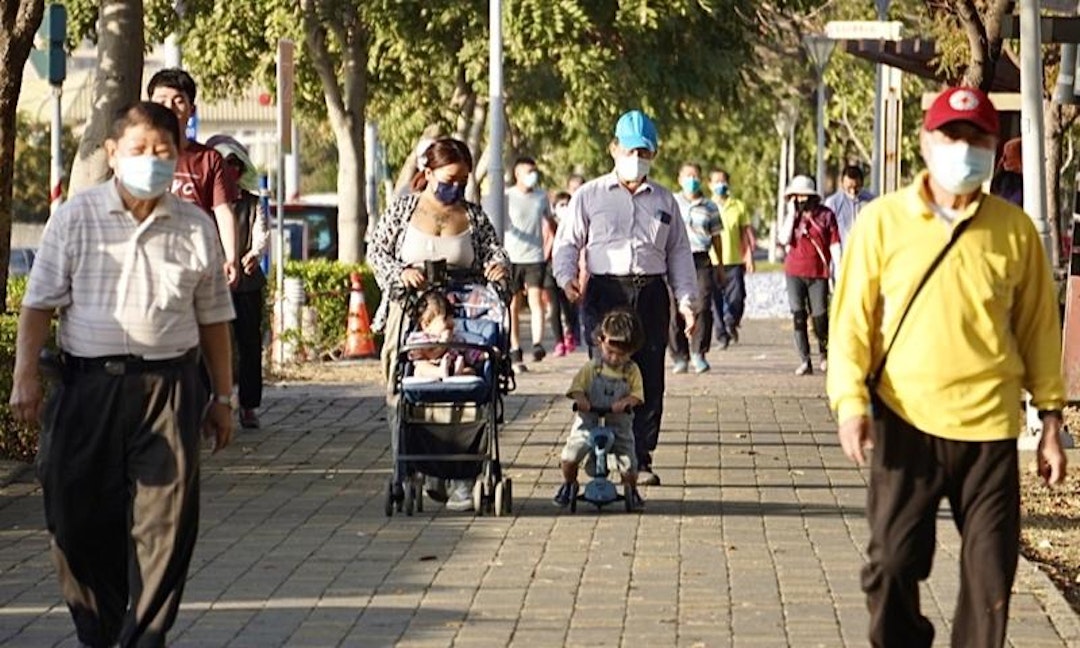
The trend of Asian populations growing and moving to cities — providing cheap labor, demand for modern infrastructure and high economic growth — has reached a turning point with China now joining countries with shrinking populations in the region. Still, the aging and shrinking countries of Northeast Asia are likely to continue to be Asia’s major powers for the foreseeable future, but will link in new ways to Asia’s still-growing states.
Asia’s dominant economies — China, Japan, South Korea, and Taiwan — are together experiencing unprecedented rapid population aging. It was only in 1999 that any major country had ever reached a median age above 40, with Japan at 40.4. Japan continued to have the highest median age in the world in 2021 at 48.4, and its neighbors are close behind. In contrast, the majority of the world’s population lives in poor countries with young median ages — including several Indo-Pacific states such as India, Indonesia, the Philippines, and Vietnam.
Asia’s varied demographic transitions are creating surprising new connections. Manufacturing superpowers, Japan and South Korea, have shifted much of their production to places with more youthful populations. In 2018, over one quarter of Vietnam’s GDP was created by just one South Korean firm, Samsung. This is not a one-way street, as production in Vietnam constituted 30% of Samsung’s global sales that year. Youthful countries in the Indo-Pacific such as India and the Philippines also account for some of the world’s largest sources of emigration.
South Korea is an example of the trends in other Northeast Asian states — including Japan, Taiwan, China, and Russia as well as North Korea to a lesser extent — where populations are rapidly aging and have begun to shrink in total size. Despite South Korea’s continuing rise as an economic powerhouse and its recent increases in defence spending, the country will face real challenges in the coming years. Its working-age population will shrink dramatically and its long-standing practice of conscripting young men into mandatory military service will yield fewer and fewer soldiers.
South Korea will see a nearly 35% reduction in the working-age population (20–64 years old) from now until 2050 based on current fertility rates. Taiwan and China will see 28.6% and 20.6% reductions respectively. For China, that is a decrease of over 186 million people in this age group over the next 27 years.
Immigration is one option to maintain robust working-age populations. A group of regional states — including Australia, New Zealand, and Singapore — have embraced this approach to offsetting below-replacement birth rates in their native populations, resulting in continued population growth. Japan, South Korea, and Taiwan have experimented with receiving more foreign workers but so far have not instituted new programs at a scale that would have a noticeable effect on their rapid aging. Given China’s large population size, immigration is simply not an option to offset a shrinking working-age population.
Vietnam is an example of a group of regional states that are barely managing to maintain a stable population without immigration or rapid aging, while also experiencing numerous internal demographic shifts. The population shift from rural to urban areas is a driver for an urban labor market that fuels Vietnam’s export-driven growth.
The Vietnamese media and public are concerned about the increasing numbers of their young workers moving to foreign countries. At the same time, the growing symbiosis between South Korea and Vietnam is an excellent example of Asia’s demographic interconnectedness, as South Korea continues to locate its lower-cost manufacturing operations in other countries.
Several “middle power” states in the Indo-Pacific are projected to grow and age much more slowly — and are poised to benefit from a “demographic dividend” that Northeast Asian states experienced decades ago. India will become the world’s most populous country as early as 2024, with a projected population growth of around 256 million by 2050 — versus a combined projected population loss of 176 million by Russia, Japan, and China combined, in addition to more rapid aging of those populations.
This group of states face very different demographics-related challenges more in line with population-growth fears commonly heard in the twentieth century, such as concerns about having too many mouths to feed and not enough employment options, and the potential resulting political instability. In the 21st century, 98% of population growth will be in less-developed countries and the world population is expected to peak before the century’s end.
Demographic change within Asia’s aging powers contributes to increased investments in Asia’s growing states, creating new opportunities for them to benefit from competition among states such as China, Japan, and South Korea. But domestic leaders across the region face mounting political pressures due to inadequate infrastructure for growing cities, another demographically driven challenge.
Asia’s population changes underscore the interconnectedness of the region and the shared challenges that states face. Rather than pushing them further away from each other, Asia’s demographic differences are bringing many states closer together.
Andrew L Oros is a Professor of Political Science and International Studies at Washington College, Maryland, and Mansfield-Luce Asia Scholars Network scholar.
The author wishes to thank the Mike and Maureen Mansfield and Luce Foundations for managing a two-week, four-country East Asian study tour in the Covid-19 era that informed this analysis.
The News Lens has been authorized to republish this article from the East Asia Forum. East Asia Forum is a platform for analysis and research on politics, economics, business, law, security, international relations and society relevant to public policy, centered on the Asia Pacific region.
READ NEXT: Taiwan’s Population Shrinks for the First Time
TNL Editor: Bryan Chou (@thenewslensintl)







